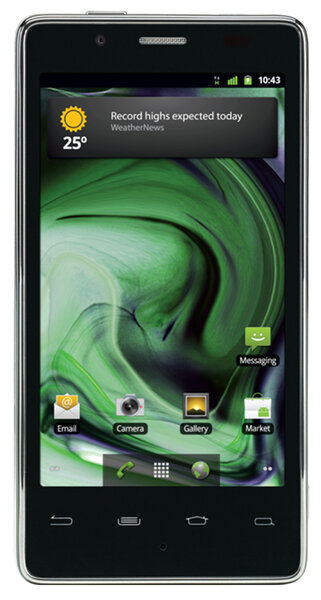Intel's first Android phone, the XOLO X900, debuts in India
Loading...
Intel this week took the wraps off the XOLO X900, a smart phone built by Lava, an Indian manufacturer, and powered by an Intel chip. The XOLO X900 – doesn't it sound like a high-grade lawnmower? – is slated to hit shelves in India on April 23. The asking price: 22,000 rupees, or about $424. No word on whether Lava will subsidize the price for users that buy the thing with a data and voice contract.
"The first smartphone with Intel inside is now available to Indian consumers," Intel exec Mike Bell said in a statement. "The boundaries of personal computing are expanding. As we enter the India market with our first smartphone from Lava, the device not only showcases the rich capabilities and user benefits of Intel computing, but also highlights the exciting possibilities of what’s still to come."
The specs on the XOLO X900 are solid: The Android 2.3 OS, a 4.03-inch display, 3G capability, an 8-megapixel camera, 1080p HD video playback, and the 1.6 GHz Atom chip, courtesy of Intel.
It's worth noting here that although Intel has been careful to call the X900 the first India-specific Intel smartphone, some sites have taken to calling it the first Intel handset, full stop.
And that's just plain wrong, writes Bill Ray of the Register. "Intel chips powered a range of BlackBerry handsets, and a generation of Windows Mobile based devices, including O2's XDA II and running right up to the XDA Advantage – which was more mini-laptop than mobile phone," Ray writes. "Even the venerable Nokia Communicator 9000 had an Intel chip in its heart."
In related news, earlier this week RIM took the wraps off the BlackBerry Curve 9220, a budget-priced handset bound for the Indian market. The Curve 9220, like the XOLO X900, isn't exactly bristling with perks – there's an FM radio and a relatively simple camera on-board – but it does come with several social networking features, from a Facebook app to the BBM messaging service.
RIM is targeting the phone at younger users.
For more tech news, follow us on Twitter @venturenaut. And don’t forget to sign up for the weekly BizTech newsletter.







